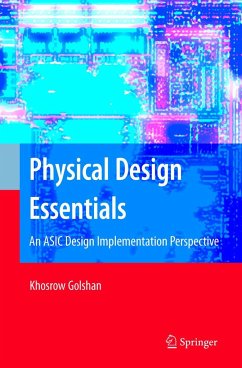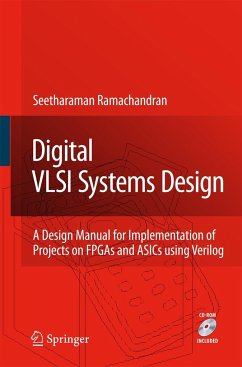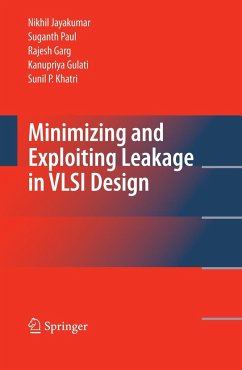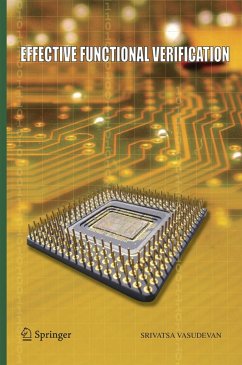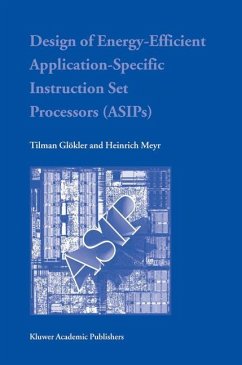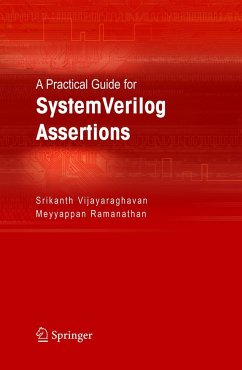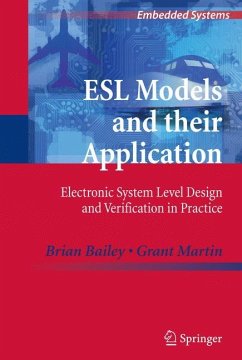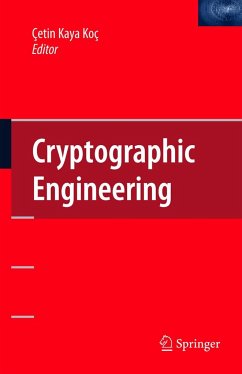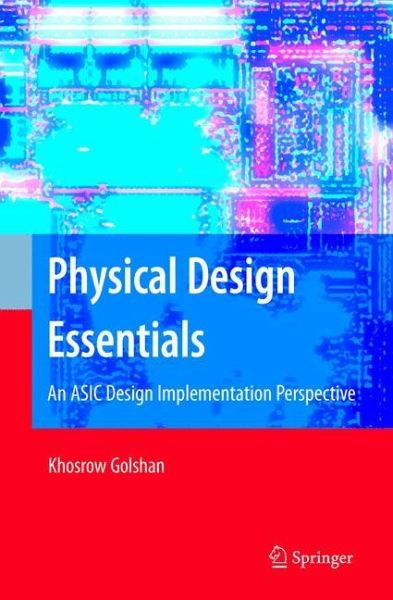
Physical Design Essentials
An ASIC Design Implementation Perspective
Versandkostenfrei!
Versandfertig in 6-10 Tagen
113,99 €
inkl. MwSt.
Weitere Ausgaben:

PAYBACK Punkte
57 °P sammeln!
Physical Design Essentials explains the basic steps required in the physical design of Application Specific Integrated Circuits (ASICs). The subject matter presentation follows the industry-common ASIC physical design flow.Topics covered include:Basic standard cell design, transistor-sizing, and layout stylesLinear, non-linear, and polynomial characterizationPhysical design constraints and floor planning stylesAlgorithms used for placementClock tree synthesisAlgorithms used for global and detailed routingParasitic extractionFunctional timing and physical methods of verificationTesting Techniqu...
Physical Design Essentials explains the basic steps required in the physical design of Application Specific Integrated Circuits (ASICs). The subject matter presentation follows the industry-common ASIC physical design flow.
Topics covered include:
Basic standard cell design, transistor-sizing, and layout styles
Linear, non-linear, and polynomial characterization
Physical design constraints and floor planning styles
Algorithms used for placement
Clock tree synthesis
Algorithms used for global and detailed routing
Parasitic extraction
Functional timing and physical methods of verification
Testing Techniques
Physical Design Essentials is written for professional design engineers who need to be conversant with all aspects of ASIC design implementation: device processes, library development, place-and-route algorithms,verification, and testing.
Topics covered include:
Basic standard cell design, transistor-sizing, and layout styles
Linear, non-linear, and polynomial characterization
Physical design constraints and floor planning styles
Algorithms used for placement
Clock tree synthesis
Algorithms used for global and detailed routing
Parasitic extraction
Functional timing and physical methods of verification
Testing Techniques
Physical Design Essentials is written for professional design engineers who need to be conversant with all aspects of ASIC design implementation: device processes, library development, place-and-route algorithms,verification, and testing.





